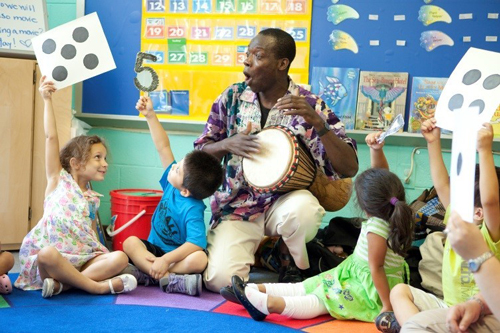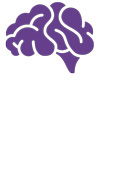
Arts integration is a powerful teaching strategy. Educators use singing, making music, dancing, role-playing, and storytelling to aid in teaching academic subjects. The result? Joyful, active learning.
Why arts integration in early childhood?
Arts integration is grounded in research and proven to support early childhood development.
The early years are the most active period for establishing critical neural pathways in the brain. Teaching through the arts helps children simultaneously engage different senses and create and strengthen the connections across the brain that form the basis for learning.
Wolf Trap Institute for Early Learning Through the Arts incorporates arts into the classroom to give young children a strong foundation for success in school and in life.
 Arts integration develops cognitive skills
Arts integration develops cognitive skills
 Integrating the arts into lessons builds social and emotional skills
Integrating the arts into lessons builds social and emotional skills
- Teaching through the arts encourages active play, which provides many benefits like learning to express and identify emotions, gaining feelings of confidence and control, and forming strong relationships.
- Music, dance, and drama can be especially beneficial for children who are shy, have never been to school, or are learning more than one language.
 Arts integration supports health and wellness
Arts integration supports health and wellness
 Utilizing the arts when teaching provides deeper learning for all students
Utilizing the arts when teaching provides deeper learning for all students
- Children learn in different ways. Teaching through the arts allows educators to teach content in more than one way and gives children a range of tools and skills to demonstrate their knowledge.
- Using the arts to engage young children in learning supports equity in education. Children from low-income families, for example, gain vital early literacy and math skills when participating in early childhood programs that are active, engaging, and motivating.